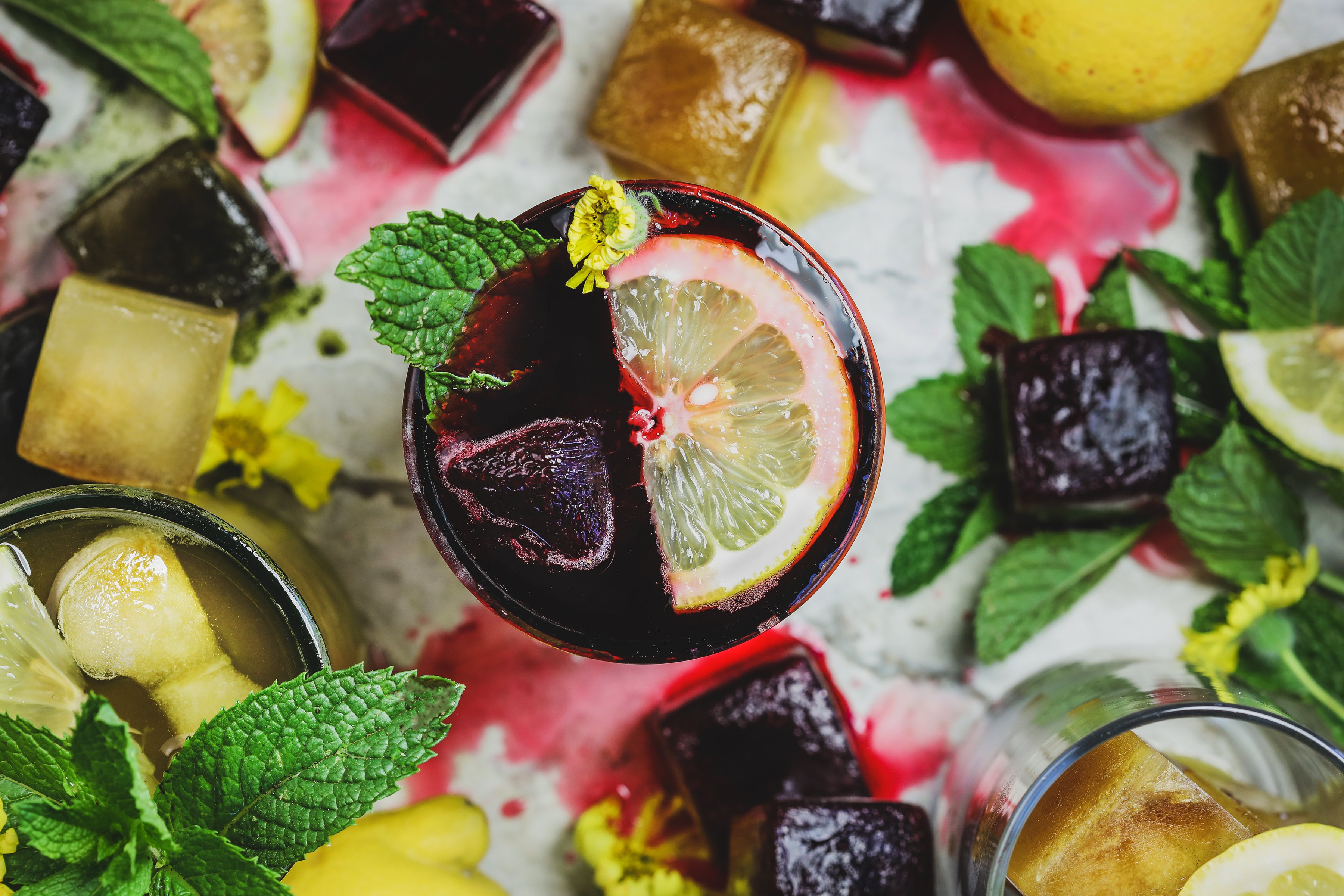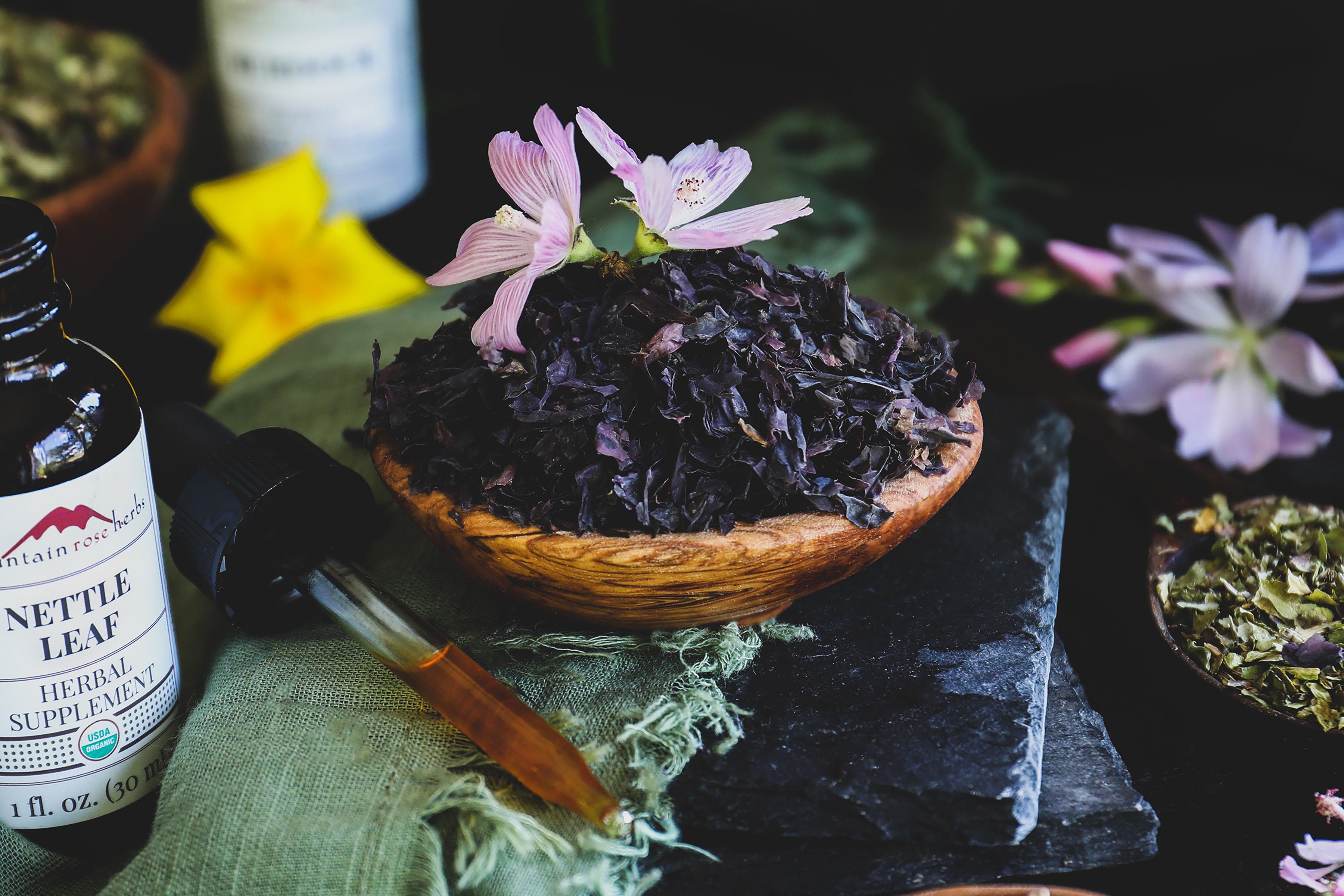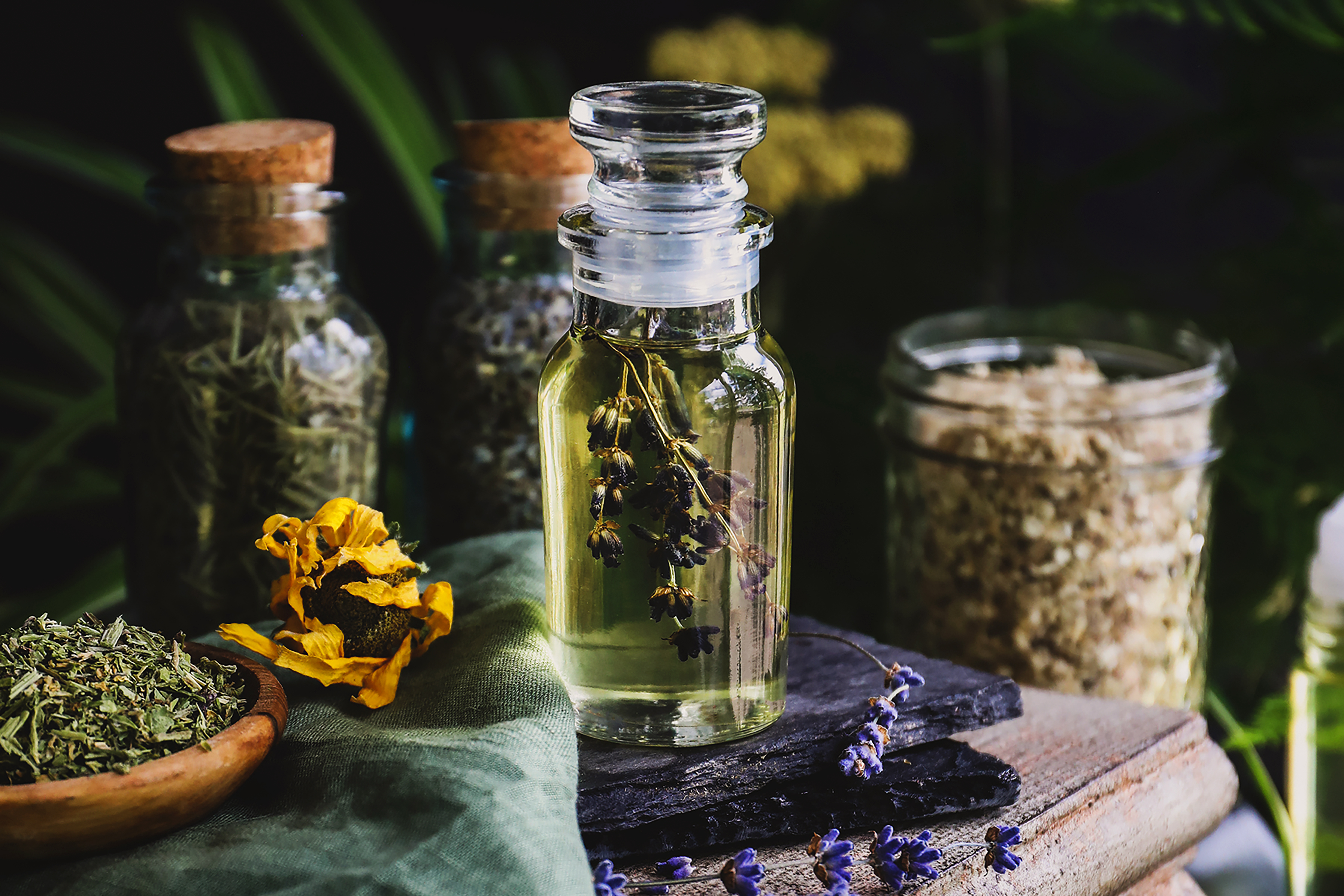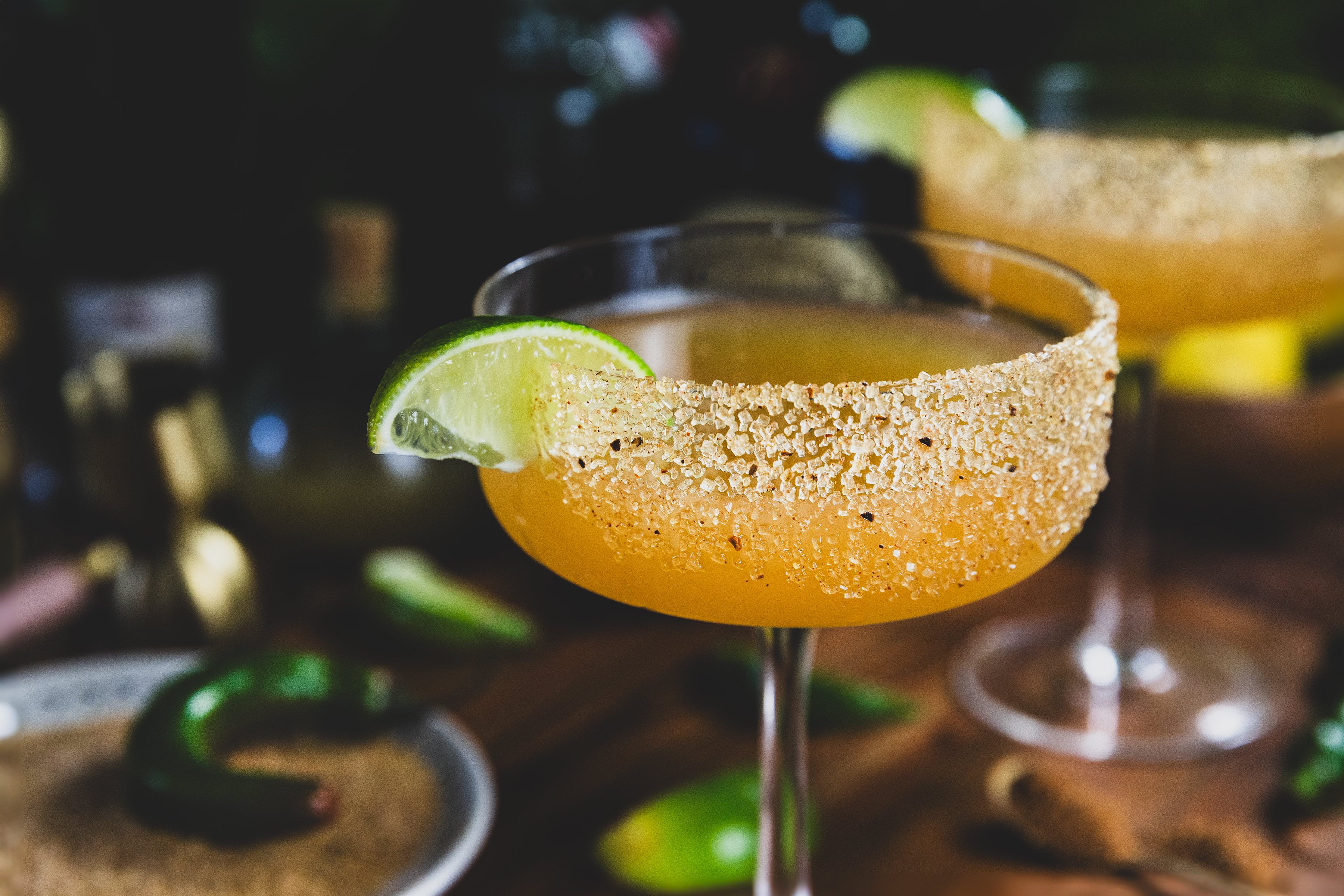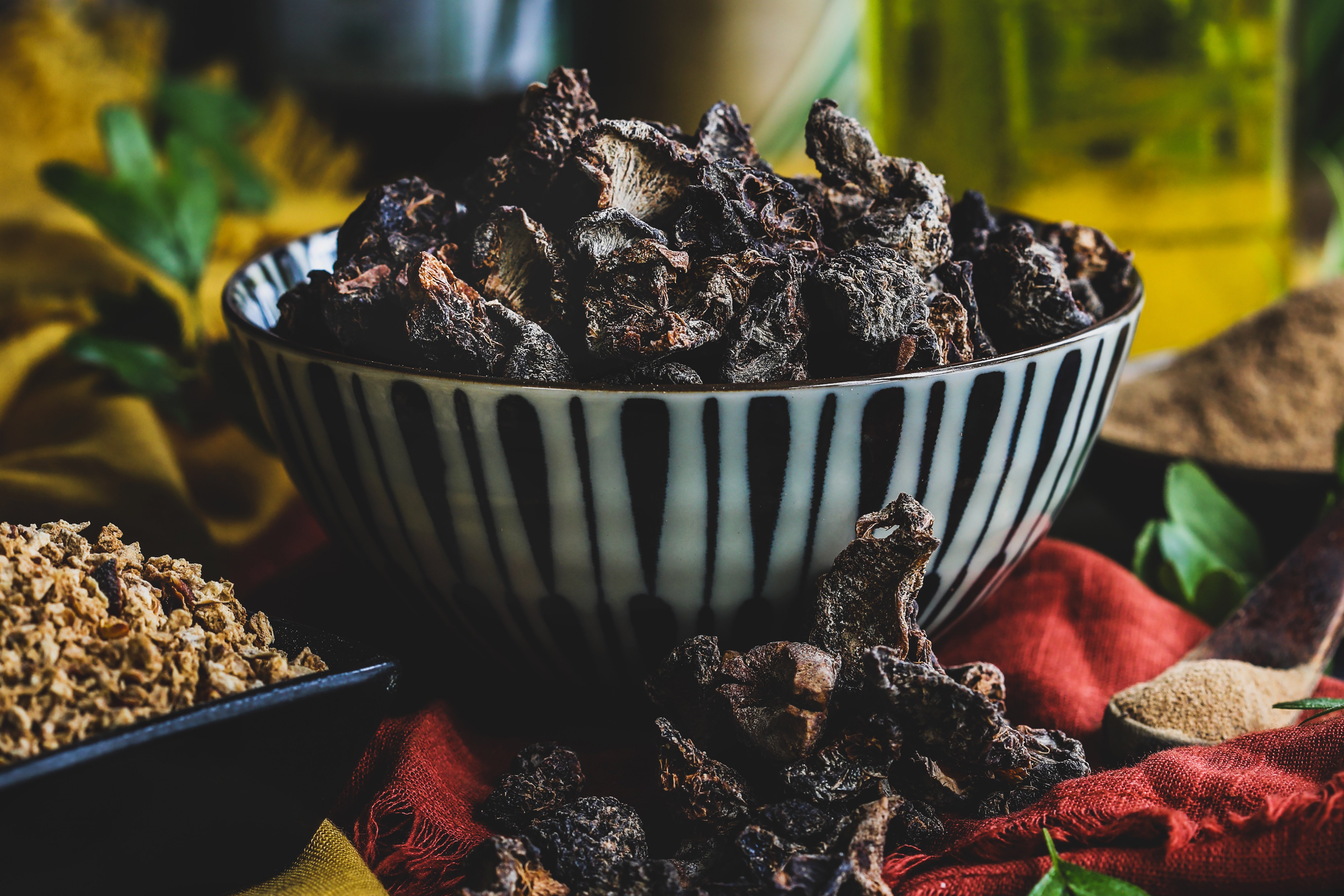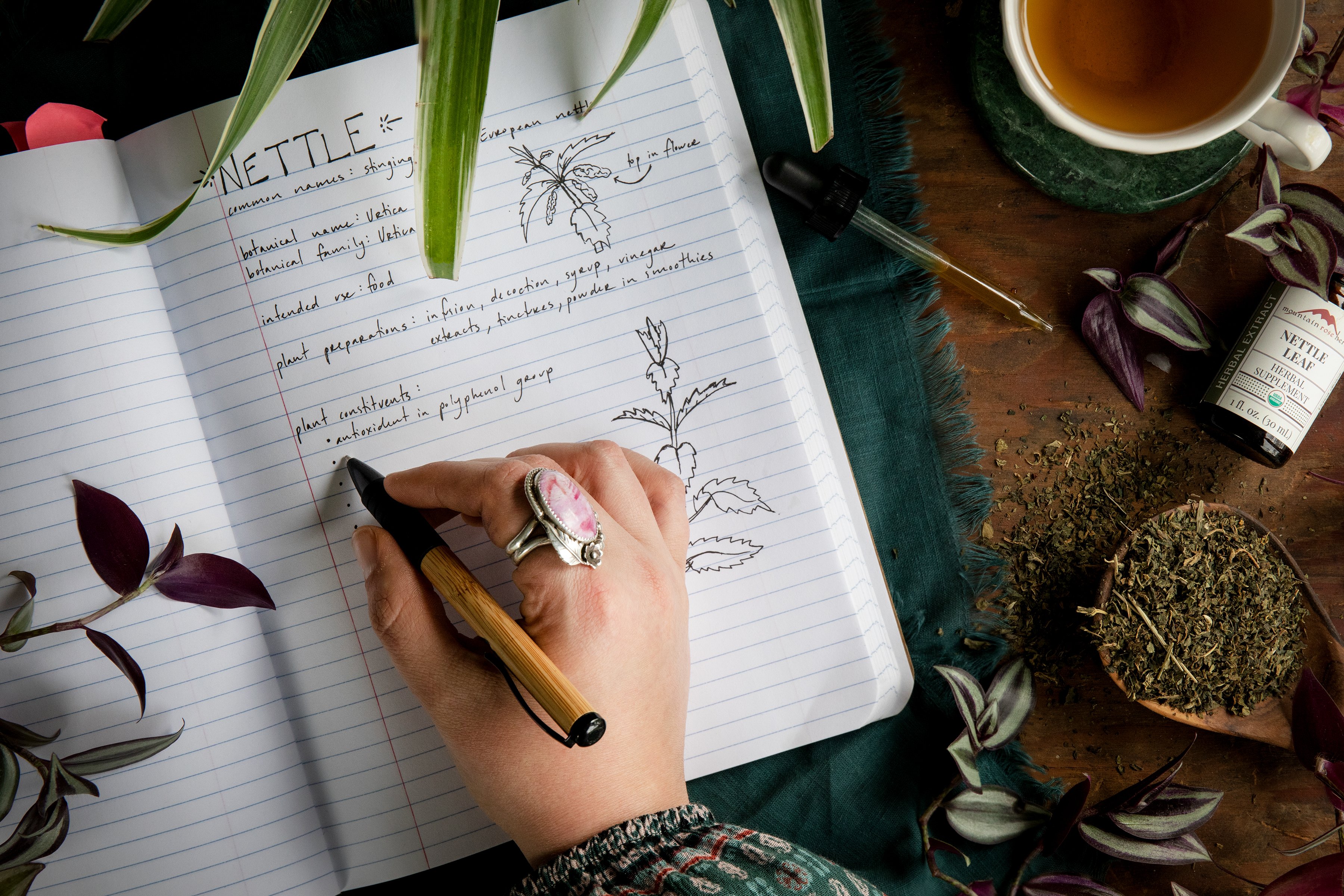I’m always looking for new and convenient ways to add herbs to my diet. As you may have learned from my blog on how to make herbal salt blends, I believe it is the small daily habits that truly add up to the biggest changes in our overall health and wellness. This is one of the reasons I started making herbal ice cubes. This simple preparation is easy, fast, and offers some wonderful benefits for our hard-working bodies and minds. Simply adding a few herbal ice cubes to my water allows me to harness the power of herbs without tacking on any extra time or effort. These “instant iced tea cubes” turn a plain glass of water into flavorful tea in seconds and offer the opportunity to incrementally add extra vitamins, minerals, and functional herbs to your daily routine.
Read MoreWhether you have acreage for a big herb garden or, like me, you’re trying to get as many herbs as you can in your small space—using patio pots, and windowsills, and waging war on every spot of lawn grass that you can eradicate—preserving our mid-summer herbal harvest is a deeply satisfying way to carry the magic of life-giving summer into the cold winter months. Drying our own herbs is remarkably simple and doesn’t require expensive special equipment—just some rubber bands and a piece of screen or a drying basket. If you’re ready to harvest your own herbs, here are a few pointers on drying and storing your bounty.
Read More
Continuing our study of phytochemistry, the focus of this post is on the nutritional benefits of plants. Every plant needs vitamins and minerals to thrive just as we do. In turn, plants are fantastically nutrient-rich, some more than others. We’ve been told to eat our veggies because they’re good for us! All cultures cook with botanicals for taste and health. However, there are also other excellent ways to incorporate the nutritional benefits of plants. We can readily extract plant nutrients in low ethanol (<40%) alcohol tinctures, in water, and in herb-infused vinegar and honey. Let’s delve into how to extract vitamins and minerals in plants, preserve them, and utilize them in ways our loved ones will enjoy taking.
Read More
Our skin is literally our first line of defense, not only against the outdoor elements, but also things we don’t often think about like the detergents we use in our laundry, the chemicals in swimming pools and hot tubs, and the daily ravages of air pollution. According to the U.S. Environmental Protection Agency, the air in our homes and other buildings “can be more seriously polluted than the outdoor air in even the largest and most industrialized cities.” Air pollutants hurt the skin in a variety of ways; they can activate cell metabolism and inflammatory processes, they can induce oxidative stress that causes free-radical damage and breaks down healthy collagen, etc., all of which ultimately throws off the balance of the skin’s natural microbiome. When that microbiome gets out of whack, some people experience sensitive acne, rashes, hives, and redness. Others struggle with dry, itchy skin and an uneven complexion. All day every day, our skin acts as a shield between us and the world. That’s why it’s important to give it all the support we can.
Read More
Affordability is a real issue when it comes to health and wellness. Many of us are living on tight budgets, and that’s not getting any better with the current skyrocketing inflation. One of the things that I love about herbalism is that it empowers me to make better choices for my health and wellbeing without blowing my budget. It’s true that some herbal formulations require ingredients that are beyond what I can purchase, but there are many effective options that fall comfortably in the affordable zone, so I’ve never felt like I missed out because I couldn't buy those pricier options. The following 20+ recipes are perfect examples. From wellness recipes to topical applications and culinary treats, these excellent, affordable formulations have served the Mountain Rose Herbs community well for many years. Enjoy!
Read More
Black cohosh (Actaea racemosa) is one of the top-selling herbal supplements in the United States. According to United Plant Savers (UpS), the harvest of black cohosh in our nation is as much as half-a-million pounds in dry weight per year—and 97% of that harvest is wild-sourced! This level of massive-scale wildharvesting has repercussions and raises concerns about the long-term sustainability of this powerhouse herb. Fortunately, unlike some of our other favorite forest-farmed botanicals, black cohosh is easy to cultivate. While this doesn’t address the immediate issue, it does give us hope for a bright future. Let’s take a deeper look at what we can do to support a sustainable future for black cohosh.
Read More
This spicy margarita recipe with DIY jalapeño simple syrup, homemade citrus margarita mix, and a delicious chili-lime rimming mixture for your glass is going to check all your tastebuds’ boxes. Make the simple syrup and margarita mix ahead of time, refrigerate them until ready to use, and then you can easily shake up a delicious, spicy margarita whenever the occasion calls for it. Organic chili-lime salt and dried jalapeño flakes are the key to these easy, delicious homemade margaritas!
Read More
I am one of those people who seeks out shade. On a camping day or a lazy afternoon at the river, as the sun crosses the sky, I will be the one moving my camp chair to stay out of its way. And yet, somehow, I still find myself dealing with the effects of too much sun. It’s easy to underestimate the sun’s power when we’re busy playing, gardening, swimming, hiking, and enjoying other summertime activities. That’s why I prepare ahead by keeping the necessary components around for simple botanical formulations that help alleviate the symptoms of prolonged sun exposure. When you have the ingredients, the recipes below take just minutes to put together, so you’re only a couple steps away from sweet relief.
Read More
Recently, as I was making soup with my three-year-old granddaughter and teaching her to pronounce galangal root, I found myself in an extended game of “name that spice.” It turns out you can get through an entire elaborate Thai soup recipe with a toddler in this way; I highly recommend it. It goes something like this: Cute toddler points at spice jar and asks, “What is that spice?” Adult says, “Paprika. Smell it, what do you think?” Cute toddler makes funny face and spies another spice that looks similar. “Is that paprika too?” Adult is impressed. “Good eye, that’s smoked paprika. Does it smell different?” And on it goes like that through the colored jars. In this way, I was reminded that I have so many jars of excellent dried herbs and spices and it’s definitely time to check them for freshness.
Read More
I would like to introduce a lovely tree that many people reading this may not have had the opportunity to see in real life. It is one whose medicine is often referenced and shared among herbalists of all levels. Many know this tree and its fruit from its role in some of the most beloved herbal formulas hailing from the Indian sub-continent and the traditional medicine cultural heritage known as Ayurveda.
Read More
Phytochemistry is the study of the constituents in plants that cause physiological changes (aka health benefits) in the human body. These changes are what herbalists are attempting to achieve when creating herbal remedies. We call that herbal medicine. Knowing the actions and needs of constituents and which menstrua will extract and preserve them gives the medicine maker a clear view on pairing constituents with the correct menstrua to create effective remedies. Menstruum, or plural menstrua, is the extractor and preserver of plant medicine. The most common menstrua are water, alcohol, honey, glycerine, and apple cider vinegar.


